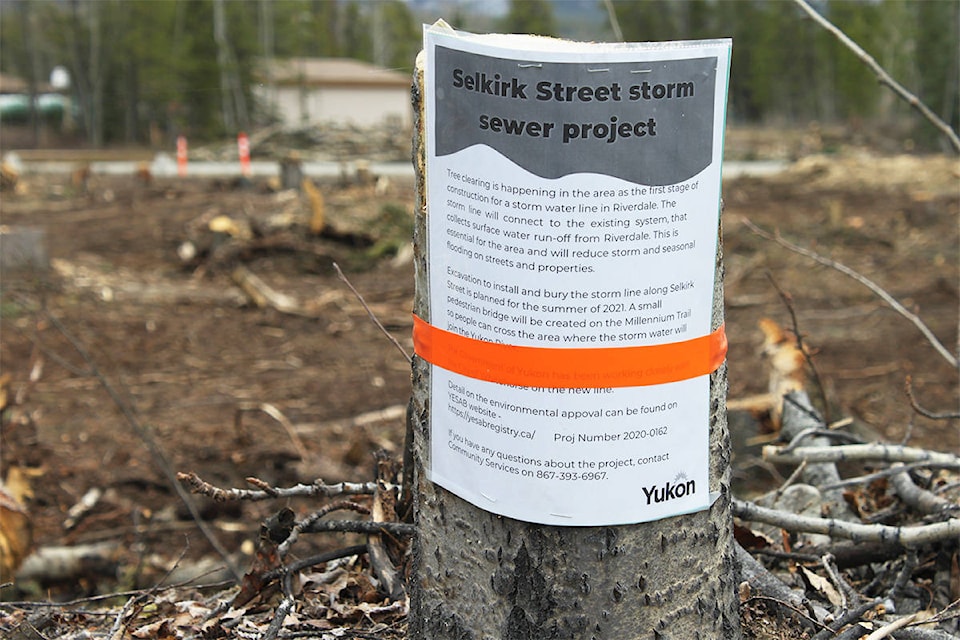The City of Whitehorse could save $1 million it had been planning to spend on a stormwater outfall in Riverdale.
At Whitehorse city council’s May 3 meeting, members were presented with a proposed agreement that would see the project fully funded by the federal government.
As Taylor Eshpeter, the city’s manager of engineering services, explained in a report to council, the city had set aside $1 million in the 2021 capital budget for the $4.2 million project that’s being overseen by the territory.
The Yukon government, however, has been able to secure funding for the entire project from the federal government.
“The city’s contribution has since been reduced to participating in design reviews and quality assurance during upcoming construction, which is tentatively scheduled to commence in 2021 and likely will be completed in 2022,” Eshpeter said.
The project came about during the construction of the most recent school in Riverdale - CSSC Mercier - when it was found the current storm sewer in the area had reached capacity.
Plans for the new outfall were then developed. It is set to run from Alsek Road and Lewes Boulevard to the Yukon River, improving drainage in the area.
Under the agreement with the Yukon government, the territory will manage the work with the city taking over ownership and maintenance after it is finished.
Work has already started on it, with the territory clearing trees along Selkirk Street and the Millennium Trail for it.
That prompted Riverdale resident Jenny Grapnel to write to the city, arguing many were shocked to see a section of forest “completely destroyed for this work.”
Trapnell’s submission was sent in April, but read May 3 as per her request.
She argued the clearing work was “overkill” and that it was difficult to get information from the city on the work.
She went on to raise questions about the city’s role in protecting the area and wondered what input the city provided during the review by the Yukon Environmental Socio-economic Assessment Board in February when the review was underway.
“There was no public signage or notification to residents and trail users during the assessment process or during the bulldozing,” she stated in her submission.
Count. Dan Boyd acknowledged the clearing work also came as a surprise “when trees started falling” and said “it seems like a massive clearing”, questioning Eshpeter about any plans for revegetation.
The plans will see revegetation done with grasses, Eshpeter said, noting that replanting trees could cause problems if staff needed to work on the outfall.
“I think it’ll look really good in the end,” he said.
Answering questions from Mayor Dan Curtis, Eshpeter also confirmed the project would benefit the city’s drinking water project, as it will mean better drainage of surface water in the area.
Council will vote on whether to have the mayor sign off on the agreement at its May 10 meeting.
Contact Stephanie Waddell at stephanie.waddell@yukon-news.com
